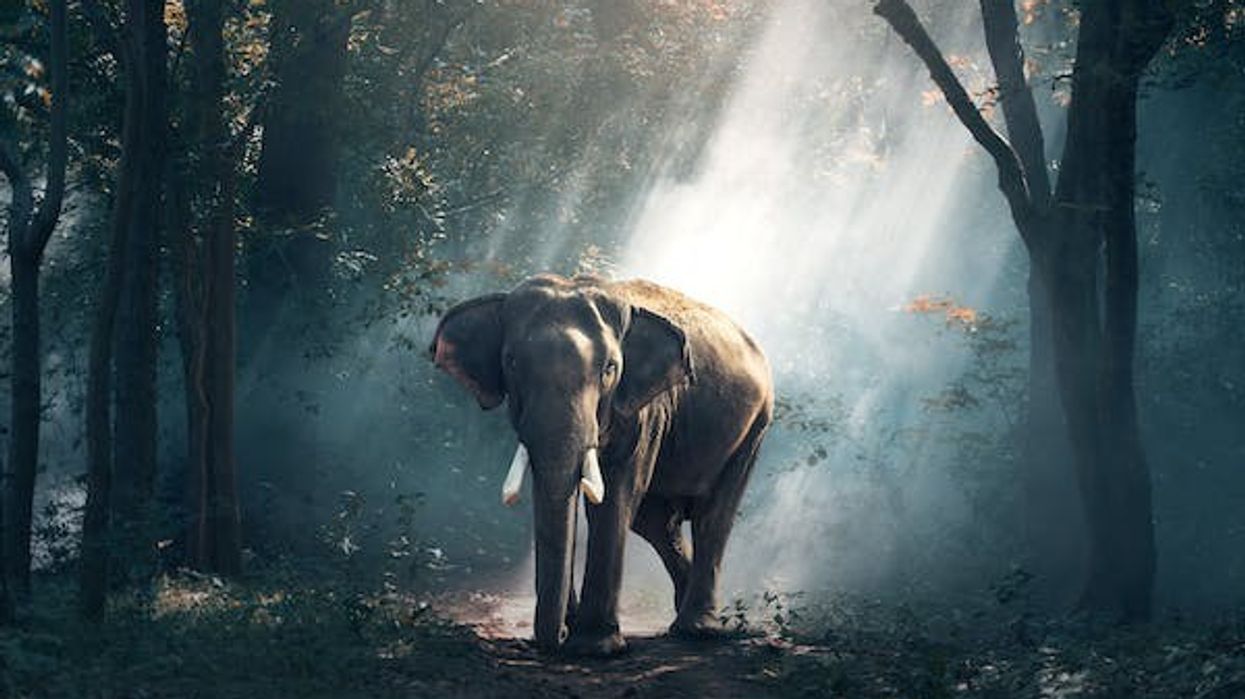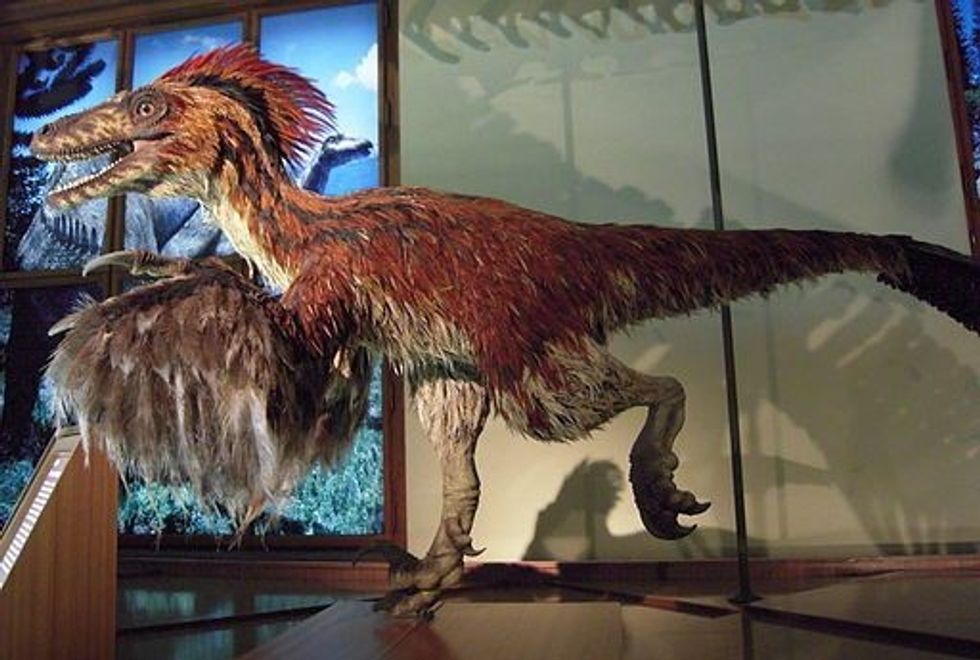The Nile lechwe, also known as Mrs. Gray's lechwe, is an antelope species native to the grasslands and swamps of African regions such as southern Sudan and Ethiopia. The Nile lechwe, Kobus megaceros, belongs to an African antelope family known as Reduncines.
The majority of the population can be found in the southern part of Sudan, where they inhabit the Nile River Valley's floodplains. The name lechwe is a word in the Bantu language that means antelope.
At present, the Nile Lechwe has the conservation status of Endangered, which is a result of severe habitat degradation due to human activities. They have also been frequently hunted over the years.
Combined with their low reproductive rate, these factors have led to dwindling numbers. They also have numerous threats in the wild such as the dangerous Nile crocodile along with lions and leopards.
The Kobus megaceros is also a unique antelope species for its appearance. It displays sexual dimorphism.
Adult males and females have distinct features even though they look similar after birth. In this Kidadl facts article, we'll take you through the most amazing Nile lechwe facts.
From the life span of a Nile Lechwe to Nile Lechwe length to Nile Lechwe habitat to their ideal food and lots more - you'll find all you need and want to know about the Nile Lechwe right here. For more interesting facts-based articles, check out Zorse and Plains Zebra facts.
Nile Lechwe Interesting Facts
What type of animal is a Nile lechwe?
The Nile lechwe is an antelope species.
What class of animal does a Nile lechwe belong to?
The Nile lechwe belongs to the class of animals known as mammals.
How many Nile lechwes are there in the world?
The last population count for Nile lechwes was conducted in 1983 and it revealed that only 30,000-40,000 remained in the wild.
Where does a Nile lechwe live?
A Nile lechwe lives across the grasslands and swamps of Ethiopia and Southern Sudan.
What is a Nile lechwe's habitat?
As mentioned previously, the natural habitat of the Nile Lechwe consists of the swamps and grasslands of Ethiopia and Southern Sudan. However, since their natural habitats across these African regions have been prone to multiple occurrences of flooding over the years, they have had to adapt.
As a result, they have become a type of aquatic antelope.
Their long hooves, which is a stark contrast to the significantly shorter hooves that other antelope species have, help them during the flood season to run and walk through their habitat. While the hooves are helpful in their natural habitat, they aren't as helpful on dry land, where the Nile lechwe tend to look clumsy at best.
Who do Nile Lechwes live with?
Nile lechwes live in packs.
How long does a Nile lechwe live?
The average Nile lechwe life span is around 12 years.
How do they reproduce?
The Nile lechwe, like most other mammals, reproduces sexually. Aged two years, both males and females reach their sexual maturity, following which mating begins.
For the Nile lechwe, there is no specific mating season, as males and females engage in intercourse throughout the year. However, the frequency of mating increases during the February - May period.
Adult males are known to quite literally lock horns to impress females and the winners of these contests typically go on to copulate. Before males and females engage in intercourse, males observe a strange ritual.
It involves bending their heads to the ground followed by urinating on their cheek hair and throat, after which they drip their beard on the rumps and foreheads of the females. The gestation period, on average, lasts for seven to nine months.
Once the gestation period is over, a single calf is born. After birth, the new mother nurses her young calf within the shelter of thick vegetation.
After a month, the mother is ready to engage in intercourse again. The young calf is weaned after five to six months and it is eligible to join the herd a few months later.
What is their conservation status?
The conservation status of the Nile Lechwe is Endangered. The IUCN Red List Nile lechwe status is a result of destructive human activities that have had a severe impact on their habitat, which has made the Nile lechwe endangered.
Nile Lechwe Fun Facts
What do Nile lechwes look like?
Apart from the fact that they're an endangered species, what sets them apart from other antelope species is that their adult males and females look completely apart. As mentioned before, they exhibit sexual dimorphism.
While the males have a blackish-brown appearance, the females are golden brown. The males also have large horns. However, both males and females look the same when they are young.
It's only after they reach sexual maturity that they develop their distinct looks. The appearance of the males has both pros and cons. For example, in the swamps of the Nile River Valley, their appearance is camouflaged due to the thick vegetation.
However, when they are out in the open, herds can be quite easily spotted by predators such as lions and leopards. But even in such situations, a Nile lechwe herd is quick to flee to water to escape, as it's an excellent swimmer.

How cute are they?
Whether you find a Nile lechwe cute or not depends on your tastes. If you like bovine creatures in general, you're very likely to develop affection for the Nile lechwe. The fact that they're relatively harmless to humans will help you want to keep one as a pet.
How do they communicate?
Both mature males and females are known to produce vocalizations, even though the Nile lechwe isn't one of the most talkative antelope species.
Communications remain at their peak during February and May when the mating peaks and there's a great sense of competition among the males to win the favor of the females.
Some of the sounds that both male and female Nile lechwes make include the pig's snort and frog's croak combination (female) and the similar yet more snorty vocalization produced by the male population.
However, it remains unclear as to what purpose the male and female sounds serve in terms of meaning.
How big is a Nile lechwe?
Compared to the height of a Chihuahua, which is around 20 cm on average, an adult male Nile lechwe is at least five times bigger and an adult female is at least four times bigger.
How fast can a Nile lechwe run?
A Nile lechwe can run quite fast in their natural habitat, i.e. muddy and swampy waters. However, on dry land, it's outrun by not just predators such as tigers and leopards, but many smaller predators as well.
How much does a Nile lechwe weigh?
Adult male Nile lechwes on average weigh around 198-265 lb (90-120 kg) while the adult female Nile lechwe weight is around 132-198 lb (60-90 kg). At birth, males weigh around 14 lb (6.4 kg) while females weigh 12 lb (5.6 kg).
What are the male and female names of the species?
There are no gender-specific male or female names for this species. Both the male and female populations are referred to as Nile lechwes.
What would you call a baby Nile lechwe?
You would call a baby Nile lechwe a calf.
What do they eat?
In their natural habitats, both the male and female Nile lechwe diet includes the vegetation and grasses that naturally grow there. From water plants to succulent grasses to wild rice to swamp grasses to aquatic plants - there are only five or six types of plant food that this African antelope consumes.
In captivity, zoos are typically known to feed them pellets that are copper-fortified and have high fiber content.
Are they dangerous?
A Nile lechwe herd is typically harmless and no member of a herd engages in violence in the wild unless someone from a herd is attacked by a predator. Nile lechwe herds are at their most dangerous and violent during February - May period when mating is at its peak.
During this period, the males often get into short and violent contests to impress the females.
Would they make a good pet?
Even though a Nile lechwe is a mammal and is mostly harmless, it's very different to own one when you compare it to owning a dog.
This species is ideally suited to its natural habitat and may take time to adapt to domestic human environments. We recommend that you appreciate the Nile lechwe as it is in its natural habitat as Nile lechwe captivity may not be in the species' best interests.
We also encourage you to make efforts to reduce the habitat destruction and hunting of this species, which would go a long way towards ensuring that the Nile lechwe population is protected.
Did you know...
Nile lechwe herds are incredibly social and move together in the wild. The herds are led by males and generally, members of one herd aren't entertained in others. New mothers are very protective of their calves and generally try to protect their young if members of other herds approach.
How long can a male Nile lechwe's horns grow?
A male Nile lechwe's horns can grow up to 18.9-34 in (48-87 cm) long.
What kind of noise do Nile lechwes make?
Nile lechwes are known for producing certain vocalizations. Many of them remain unknown, but among the known ones, the most iconic are the ones that combine a pig's snort and a frog's snort. The males' vocalizations have more snorts than those of the females'.
Here at Kidadl, we have carefully created lots of interesting family-friendly animal facts for everyone to discover! Learn more about some other mammals including the alpine ibex or addax.
You can even occupy yourself at home by drawing one on our Nile Lechwe coloring pages.










